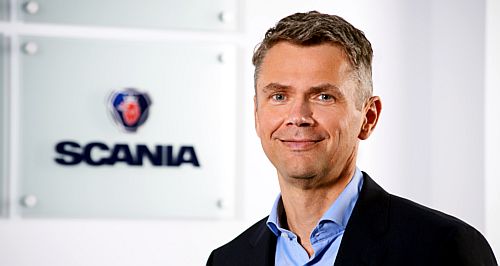News - ScaniaHydrogen heavies face a hard road: ScaniaScania boss says Scandinavian brand will continue to prioritise EV development over hydrogen11 Mar 2024 By TONY O'KANE WHILE the rollout of battery-electric product extends further and further across the industry, there are still no shortage of believers in the potential of hydrogen.
More than a few OEMs continue to hedge their bets, throwing a handful of chips in the direction of hydrogen fuel cell tech while spending the bulk of their development dollars on battery-electric vehicles (BEVs).
BMW, Mercedes-Benz and Hyundai are three of the more proactive companies making an each-way bet, with Toyota, General Motors and Honda also having a hand up for hydrogen.
Hyundai and Mercedes-Benz are also bullish on the potential of hydrogen for heavy-duty haulers, citing faster turnaround times, longer single-tank ranges, and better payload performance than battery-electric heavy trucks.
But one trucking industry stalwart believes the pursuit of hydrogen-fuelled trucks is – at least in Australia – a harder road to travel than a pure-electric pathway.
“We are experimenting with fuel cells and we have some trials, but at this time we’re not looking at it so much. We strongly believe in [battery] electrification at this time” said Scania Australia managing director Manfred Streit.
The Swedish truck and bus maker has been involved in a hydrogen truck trial in Norway with food wholesale brand Asko, running four heavy-duty trucks powered by hydrogen fuel cells as part of a mixed zero-emissions fleet.
The hydrogen trucks have been used to run goods on longer-distance routes, with smaller BEV trucks taking care of local deliveries.
However, the small fleet has reportedly been dogged by mechanical and sustainment issues, some related to the complexity of the powertrain, some related to external factors like a hydrogen charging station explosion.
There are a myriad of other reasons why Scania is, for now, backing battery-electric tech for its zero-emissions offerings, despite BEV trucks having their own hurdles to overcome.
“There’s the cost of the fuel cell itself as well as the hydrogen tank itself, it’s a pressure vessel that has to be manufactured to very precise standards to hold that high-pressure gas,” said Scania Australia director of sales for its bus division and marine and power equipment Julian Gurney.
“The fuel cell stack also needs regular maintenance.”
Scania has already made the first steps toward introducing its BEV range to Australia, with ten electric bus chassis here, one of which is fully built up (by Bustech) and already in service in Adelaide, and three Scania 25 P electric trucks also undergoing evaluation on mining sites.
With front axle weight limitations now easing, the door to more Scania BEVs – as well as public road trials – is also open.
Charging infrastructure for BEV trucking will remain a challenge for the foreseeable, however.
The Megawatt chargers needed for fast turnaround times are not here yet, and what degree of energy network upgrades will be needed to support them remains an unanswered question.
Even so, there is also the question of whether hydrogen is the right fuel to decarbonise road freight – at least in its present form.
“Can you produce hydrogen fully 100 per cent green at the moment? No. Even if the hydrogen is green, the process of producing hydrogen to be able to run the vehicle, there’s a lot of (efficiency) loss, like the friction of tyres on the road,” explained Mr Streit.
Right now, a small percentage of hydrogen generation is achieved through the ‘green’ method – that is, through using renewable energy to electrolyse water into its hydrogen and oxygen gas.
Instead, the overwhelming majority is created through a process called steam reformation, which combines natural gas with high-pressure steam to produce hydrogen. Dubbed “blue hydrogen”, it carries a carbon cost of around eleven tonnes of CO2 for each tonne of hydrogen produced.
From Scania’s perspective, decarbonisation through hydrogen only makes sense if the gas is truly green.
However, the conversion of electrical energy from a wind turbine or solar panel into stored chemical energy in the form of compressed hydrogen results in energy losses along the way – for Mr Streit, simply putting that renewable energy straight into a battery is a more elegant and efficient solution than pursuing hydrogen for the sake of fast refill times and a few tonnes more payload.
“We are not closing our eyes towards these things, we are doing these trials and looking at every alternative powertrain, but right now it’s the horse that is running as a BEV that is in the lead,” he concluded.  Read more |
Click to shareScania articlesMotor industry news |

















Facebook Twitter Instagram